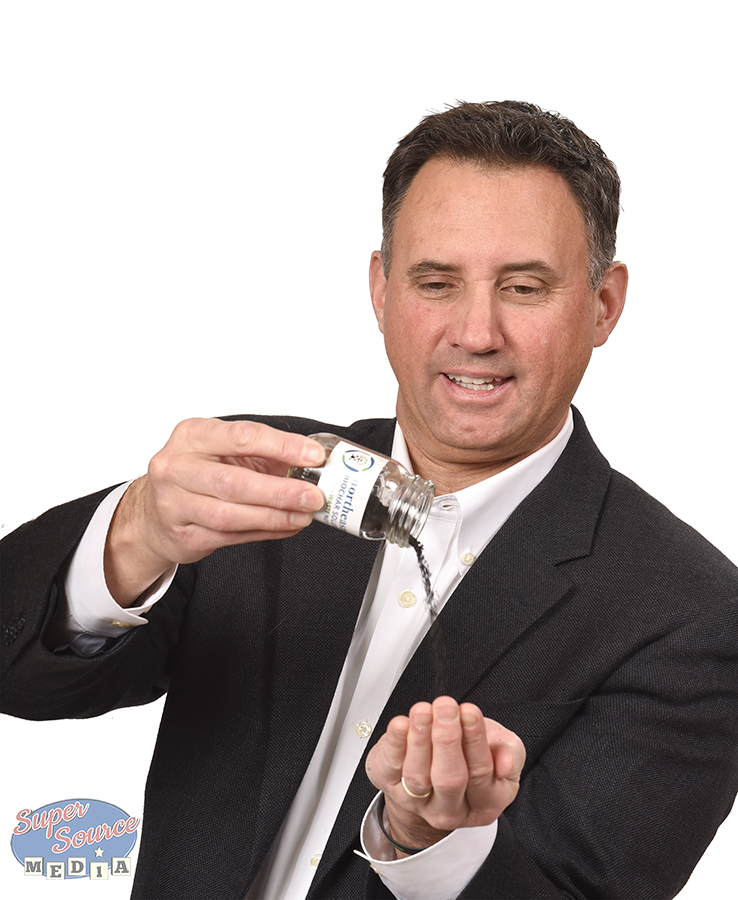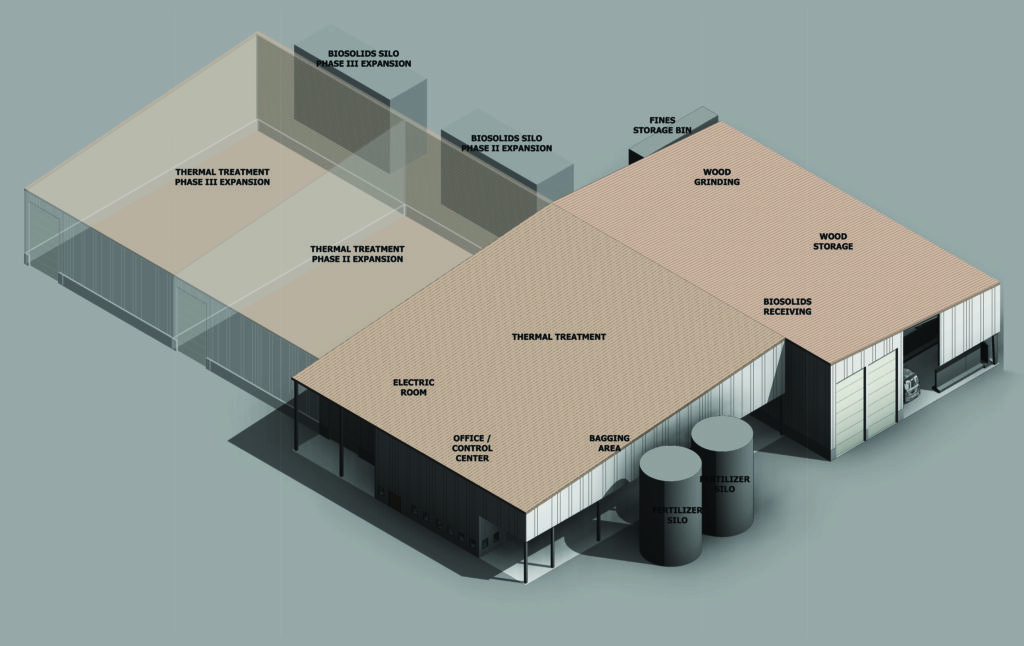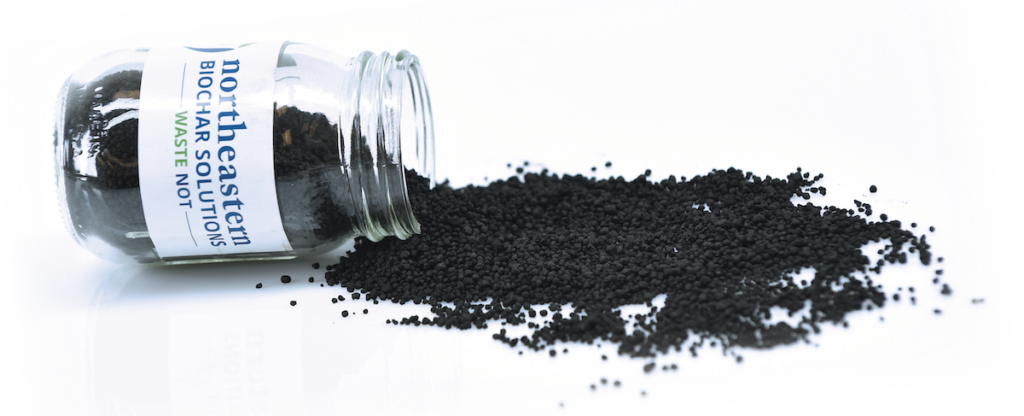The Future is Green: The Growing Eco Economy

“Charmed” isn’t a word one expects to hear from climate experts, but Kathleen Draper, a member of the International Biochar Initiative’s board and US Director of the Ithaka Institute for Carbon Intelligence, has coined the word “biocharmed” to describe reactions to the emerging use of biochar technology.
For hundreds of years civilizations have leveraged our planet’s abundant natural resources, sometimes for the greater good, and sometimes simply for personal gain. But this has come at a cost to our environment. Industrialization and population growth have simultaneously depleted natural resources from the Earth while introducing harmful chemical composition in and around the planet threatening our future in many ways: clean water, crop production, clean air.
The big question is: How do we keep the wheels of progress turning while acting as good stewards of our environment?

Something is Happening, Right Here in Saratoga County.
Enter eco-capitalist Ray Apy. An energetic 54-Year-old, Apy found himself looking for his next act after selling his company Annese & Associates – an IT firm in Clifton Park – to Minnesota-based ConvergeOne. After taking over as CEO in ‘08, Apy had grown the business to annual sales exceeding $100 million by 2014.
“After a few months of ‘retirement’ I was itchy to try something else, and knew I wasn’t ready to retire. I looked around at a few very different options and, as these things often happen, a referral from a friend lead me to the Midwest where I met a guy who had been doing some impressive work with alternative technologies in agriculture. As we talked more, the potential – beyond agriculture – just grew.”
What started as a conversation between two entrepreneurs blossomed into Northeastern Biochar Solutions, the parent company of Saratoga Biochar Solutions (SBS.)
“Our differentiator seemed to be this technology’s ability to significantly address a number of globally pressing needs, from waste disposal to agricultural enhancement to carbon capture, in a win-win way. The environmental and economic benefits are real and really significant,” according to Apy. “Our pillars are sustainability, innovation, ingenuity, and technology. We are in the business of resource recovery”
As the world faces growing global challenges such as constrained resources and a ticking clock, Apy realized the best solutions would have to achieve multiple goals, be simple, and cost-effective.
“The technology behind biochar is hundreds of years old. It is low tech tweaked and adapted to solve complex modern problems,” he says.

Saratoga Biochar Solutions has identified what Apy calls “an ideal location.” The plant will be constructed on six vacant acres near the Hexion Inc. formaldehyde plant in the 243-acre Moreau Industrial Park, located near Exit 17 of the Northway. “There are no immediately adjacent neighbors who might worry about trucks coming and going, and other industries might be drawn to this location to take advantage of cogeneration energy, by-products of our process; another win-win.”
When up and running, SBS will have the capacity to produce approximately 65 tons of biochar per day. “Considering the vast amounts of municipal waste out there it is conceivable we will be turning away raw material,” according to Apy who, along with his partners, is eying additional plant locations in the northeast. “We are 80% of the way with our beta site and we have learned a lot. From this point on we will be ‘cutting and pasting’ – adapting and fine-tuning for future sites – what we are learning along the way. It is very scalable and transferable technology.”
Saratoga Biochar Solutions will use a proven and proprietary thermal treatment technology process to dehydrate and treat biosolid waste materials in an environmentally safe way.
Professor of energy resource economics at SUNY-ESF Tristan Brown, a thought leader at the New York State level, is in a pragmatic panic mode: “all the talk of ‘net zero’ carbon emissions is not enough, we need to find ways to be carbon negative, and we need to sequester – catch and hold – at least 50% of what we emit. Efforts like Saratoga Biochar Solutions will be critical to our success,” he says.
Burnt Toast and Silver Bullets
“I describe biochar to my mother this way” says Kathleen Draper, “think of burnt toast, that’s a basic biochar, an organic material that’s burned.”
People having been burning things forever – accidentally or on purpose – with little need to think about it, whether there might be better ways. It just works. But now there’s an acknowledgment that better ways must be found, and a “technology” that has been around for hundreds of years can reduce waste while creating positive byproducts [soil enhancement, cement and other building and packaging products as well as usable energy cogeneration]. That’s biochar.
Draper is a veritable pied piper of biochar. Speaking with her even briefly begs the question “this sounds too good to be true, is it?” She laughs and says “no, it is not too good to be true; so many people have asked me that same question that I’ve identified the Five Stages of Falling in Love with Biochar.”

Why Fall in Love With Biochar? Well, Biochar Can:
- Reduce biosolid volume by up to 95%
- Destroy harmful chemicals, including PFAS
- Is carbon neutral to negative (Biochar has significant potential as an approach to carbon sequestration: capturing, saving, and putting carbon to good use in soil)
- Improves plant growth and enhances crop yields, increasing food production and sustainability in areas with depleted soils
- Create clean energy from biosolids
- Produce beneficial byproducts
- Significantly reduce trucking (emissions and cost)
- Cost-competitive with stable, predictable pricing.
A Growing Challenge with Diminishing Options
By 2050 the world population is expected to reach 9.8 billion people, all of whom will require food and energy. That is 9.8 billion people producing trash and waste.
How do we balance economic progress with environmental preservation? This is a serious question that humanity has been grappling with over the past 50 years.
The U.S. alone produces seven million dry tons of biosolids annually, with limited options for safe, sustainable disposal.
Q: What are Biosolids?
A: Biosolids are a product of the wastewater treatment process. During wastewater treatment the liquids are separated from the solids. Those solids are then treated physically and chemically to produce a semisolid, nutrient-rich product known as biosolids.
Current methods of disposal – including landfills, land application, incineration, and even composting – can harm the environment and contaminate our clean water supply.
| Example of the Biosolid/Biochar Life Cycle: |
| Municipalities convert their raw sewage waste into biosolids. |
| Municipalities then pay waste removal companies to haul the biosolids to landfills. Moratoriums are forcing haulers to travel further and further and pay higher typing fees. |
| In the new model, those haulers would deliver their biosolids to Saratoga Biochar Solutions. |
| SBS uses a proprietary thermal treatment technology (Pyrolysis) to dehydrate and treat the biosolid waste. |
| This process converts the nutrient-rich organic biosolids into engineered biochar, a carbon rich, carbon-bonded granular fertilizer end-product. |
This is a problem for municipalities, businesses, people, and the planet.
Tremendous amounts of greenhouse gases (GHG’s) are released into the earth’s atmosphere from these existing disposal methods in the form of carbon dioxide, methane (23 times more harmful than CO2 as a GHG) and Nitrogen Oxides (300x more harmful that CO2 as a GHG). In essence, today’s disposal methods for biosolids is a major contributing source of climate impacting greenhouse gases. Surprisingly, this problem gets very little coverage in the media or public discourse.
In an effort to mitigate these contamination risks, tightening regulations are reducing the volume of organic materials accepted by landfills, farmers, foresters and ranchers, with many no longer accepting biosolids at all. This in turn drives the cost of transportation and disposal of these materials higher, and higher, and higher. A viable solution is so badly needed.

Enter Saratoga Biochar Solutions
According to economic research firm Fact.MR, biochar is a growth industry: “the U.S. dominates the global market for biochar in terms of revenue. The U.S. biochar market is expected to increase 1.2X by 2031.” Their findings further state:
The United States dominates the market because of the growing demand for organic food and high meat consumption. Furthermore, the increased awareness of the product would support the market growth in the country.
Adoption of chemical-free farming techniques is becoming more popular as people become more aware of the health benefits of organic food. Moreover, expanding the use of biochar in chicken production to reduce litter and ammonia odors is a prominent market trend.
It may absorb liquids, gases, and ammonia to neutralize odors. Increasing number of small and large-scale manufacturing enterprises are expected to boost market growth over the next ten years.
Agriculture is likely to be the largest biochar application over the coming years, and it is expected to maintain its dominance. Biochar increases water and fertilizer holding capacity of the soil, providing important nutrients to crops and promoting plant growth.
Governments are pushing people to use biochar for farming because it can reduce greenhouse gas emissions such as nitrous oxide and methane. With increase in technological developments in sustainable agriculture, biochar uses in agriculture from both, developed and developing countries, has been steadily increasing.
(Source: Fact.MR, Global Market Insights 2021 to 2031, December, 2021)
So What’s the Hold Up?
Every expert I spoke with expressed a kind of grim humor response that centered on education.
“It will be a long road,” said Draper. “Even as public and private investors become more aware – and then more enthusiastically interested – a lack of understanding of biochar and its benefits remains a gating issue. I’ve even had conversations with EPA officials who don’t have a firm grasp on this technology.”
There is a nascent, looming bioeconomy out there. It is multi-faceted, and some aspects are already well known like the push for electric vehicles, wind and solar power. But no single solution is, as Professor Brown told me, a “silver bullet.”
Regaining Balance: Hurry Up and Don’t Wait
There is an old phrase that fits our situation perfectly: It took us a long time to get into the woods but we don’t have nearly the same amount of time to get out!
Welcome to the Blossoming of the Bioeconomy: Sustainability & Capitalism
The bioeconomy is a hot topic for policymakers right now, but actually it’s not a new concept at all. It refers to economic activity derived from the use of biological material to produce goods, services, and energy. Think agriculture and forestry, construction and packaging for example.
But the current system is not sustainable: its practices contribute nearly a quarter of greenhouse gas emissions that cause climate change. It’s also of the leading culprit in pollution, degraded soil, deforestation, and water scarcity. In its Sixth Assessment Report, released this past October, the Intergovernmental Panel on Climate Change states, “from a physical science perspective, limiting human-induced global warming to a specific level requires limiting cumulative CO2 emissions, reaching at least net zero CO2 emissions, along with strong reductions in other greenhouse gas emissions.”
Apy and his partners’ vision is “focused on building a sustainability movement where waste is not wasted, ensuring a healthy environment for generations to come,” in their words.
There are no dominant blanket solutions. And biochar is not a universal silver bullet, but it can be a win-win and jump-start progress now. Just ask Ray Apy, he’s enthusiastic, positive, and focused as he leads Saratoga Biochar’s progress. In this case doing good can also mean doing well, giving “going green” a new meaning.
Biochar Can Return to the Earth with Any of the Following Benefits/Uses:
- It is a highly effective fertilizer.
- It is a powerful agent in contaminated soil remediation.
- It is not subject to nutrient runoff and the surface water contamination problems that arise from nutrient runoff.
- It increases soil fertility and agricultural yields.
- It improves soil structure, aeration, and water retention.
- It shrinks dependence on, and use of, imported oil, fossil fuels, synthetic fertilizers, and pesticides.
Biochar’s efficacy in soil is measured in decades and centuries, versus the days or weeks of salt bonded, mass produced synthetic chemical fertilizer that dominate the fertilizer market today.